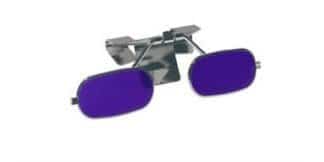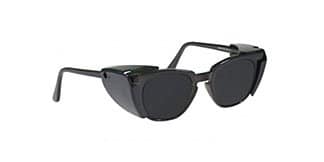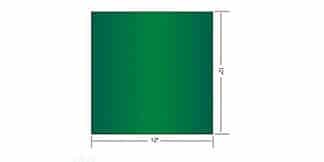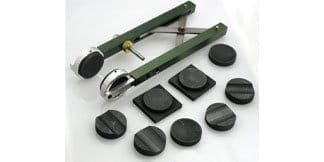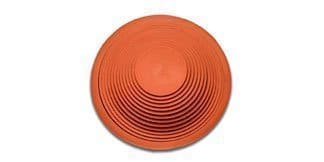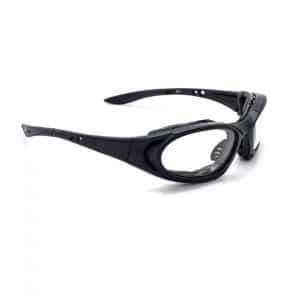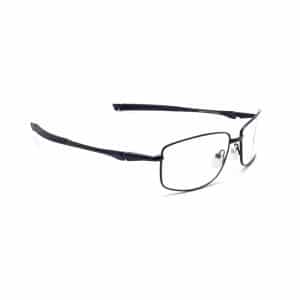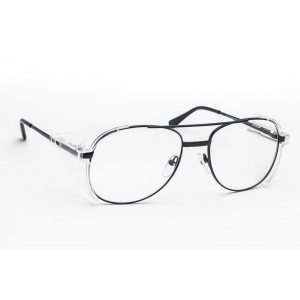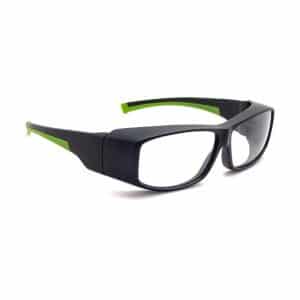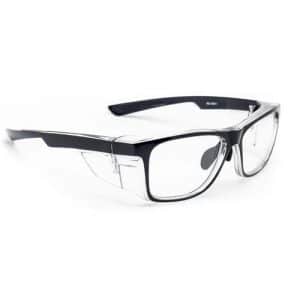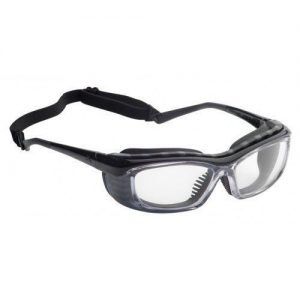Safety glasses are important in plenty of daily hobbies, activities and jobs. Prescription safety glasses often more so, as they achieve all the same benefits of keeping up with eye safety, while helping to fix our impaired vision. But with such a marvellous bit of equipment one can’t often help but think – just What are prescription safety glasses made of, and how is it that they can be so effective?
The Simple Answer
The easiest way to answer that question is by giving the straightest answer possible – and that answer is that safety lenses are typically made with polycarbonate.
Polycarbonate is a thermoplastic polymer material. In essence, a plastic mixed with carbonate in order to strengthen it and make it far more durable, as well as easily malleable. This makes polycarbonate an excellent industry material, as it’s often used for making protective gear or pieces, such as the lenses we use in safety specs. It’s both light, and incredibly strong – making it ideal for use in prescription safety lenses.
Polycarbonate is also renowned for being virtually unbreakable, with 30 times the impact strength of acrylic. Not to say that your safety goggles are entirely unbreakable, but they’ll certainly protect your eyes from impacts that would otherwise have potentially blinded you.
The differences in Safety Goggles
The material that goes into the safety glasses may differ depending on the types – after all, not every profession or hobby requires the same kinds of prescription safety goggles. Where some types may focus more on projectile protection, others might be focused more towards splash and chemical protection.
Much of the time, safety glasses will be made using the scratch and impact-resistant polycarbonate, but depending on the types, you may instead find that your safety goggles are made of acetate – a more common option for splash protection.
An environmentalist’s Choice
Acetate plastic is made entirely from plants, and is known to be completely allergy-free. A factor which makes it popular with those who suffer from any allergens related to skin contact and irritation – as well as environmentalists who prefer a less industrial solution to their eyewear problem.
Much like polycarbonate, acetate plastic is famed for being strong, light and very flexible, making it ideal for safety lenses, and shaping prescription safety goggles.
Discovered in the 1940s and hailed for their convenience, acetate plastics are made into safety spec frames over a long period of time. Several layers of plastics are formed into large blocks, after which point certain parts are shaved/cut off, others are polished down, and eventually everything is shaped into the appropriate frame.
The process takes a while and the quality is undoubtedly superior to regular glasses frames and lenses, so safety glasses made with acetate plastics may often be more expensive – but it’s all in the price of safety of course. These types of safety goggles are popular in the lab environment.
Mind what you Purchase
Price can be a difficult thing to consider when wondering which types of prescription safety glasses are best for you. It’s most important to note that price will always denote quality, as the cheaper types of safety glasses will use cheaper types of plastic in their production process – a compromise in the money is a compromise in your safety.
How can you be sure they’re safe?
There’s a process to the production of all safety glasses that goes beyond the materials put into forming them – these materials need to be tested, in order to absolutely assure their quality and make certain that they won’t fall apart at the first sign of trauma.
A lot of the time, safety lenses will go through a very much literal trial by fire – they’ll be tested against flames and harsh chemicals, in order to see how well they can resist being set alight and smoking up.
Projectiles are launched at them at daring speeds that would otherwise be severely damaging to the eyes, and heavy objects are dropped down on top of them from experimental heights. The lenses must stay within the frames in order to pass the test, as well as remain entirely shatter-resistant – otherwise the test is treated as a failure, if even as so much as a single piece falls off.
Which Safety Glasses material is the best?
There’s none in particular that can be called the best – the only ‘best’ material for safety goggles can apply to what’s best for you. Is it prescription lab goggles that you need, or regular, perhaps more comfortable safety specs? The materials that go into either can vary, and it’s up to you to understand what you need, and what you’ll be needing it for.
Regardless of what you feel you need and how you intend to use it, you can be assured that the materials that go into your safety glasses are 100% designed to assure the protection of your eyes. The rigorous testing that goes into them beforehand will make certain of that, and with such materials as polycarbonates and acetate plastic going into the bulk of prescription safety glasses designs, your eyes can’t ask for better.

